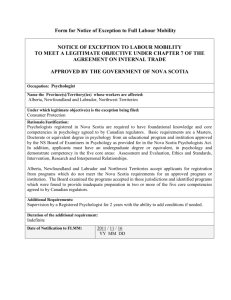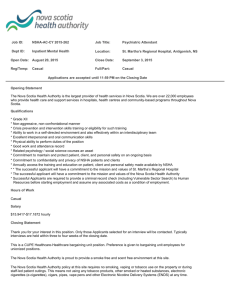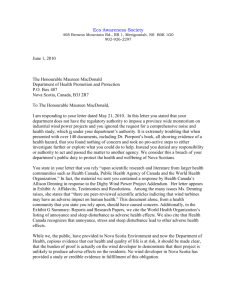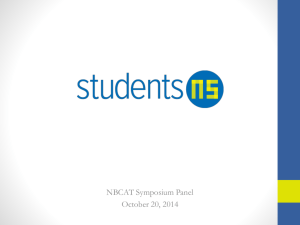Financial Analysis and Discussion
advertisement
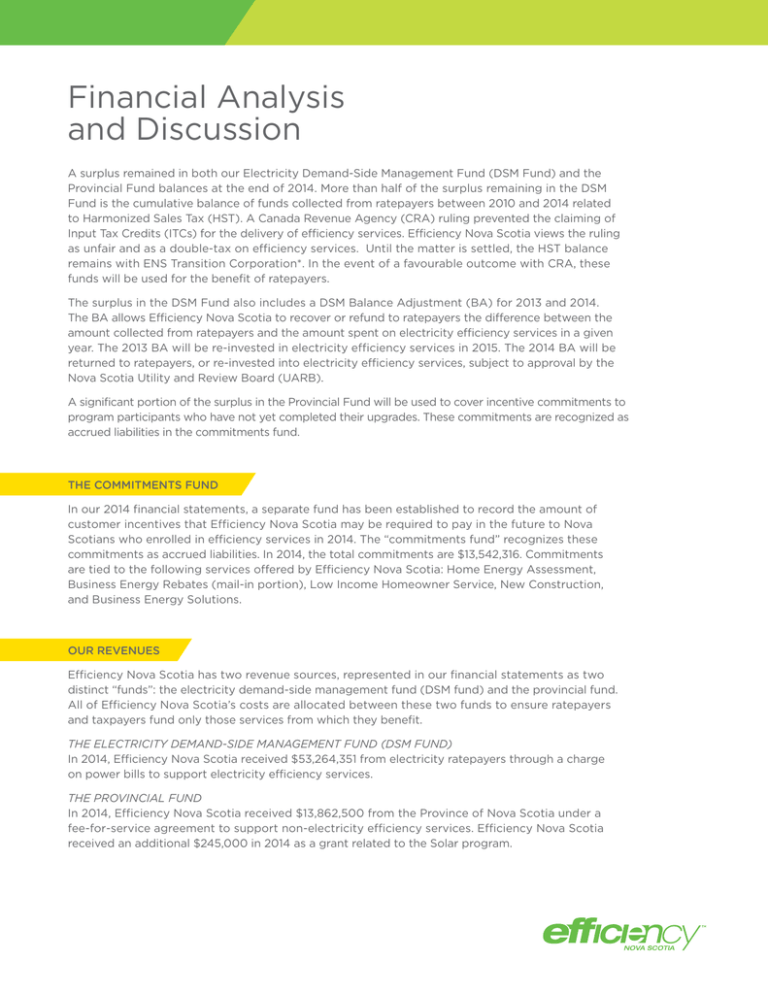
Financial Analysis and Discussion A surplus remained in both our Electricity Demand-Side Management Fund (DSM Fund) and the Provincial Fund balances at the end of 2014. More than half of the surplus remaining in the DSM Fund is the cumulative balance of funds collected from ratepayers between 2010 and 2014 related to Harmonized Sales Tax (HST). A Canada Revenue Agency (CRA) ruling prevented the claiming of Input Tax Credits (ITCs) for the delivery of efficiency services. Efficiency Nova Scotia views the ruling as unfair and as a double-tax on efficiency services. Until the matter is settled, the HST balance remains with ENS Transition Corporation*. In the event of a favourable outcome with CRA, these funds will be used for the benefit of ratepayers. The surplus in the DSM Fund also includes a DSM Balance Adjustment (BA) for 2013 and 2014. The BA allows Efficiency Nova Scotia to recover or refund to ratepayers the difference between the amount collected from ratepayers and the amount spent on electricity efficiency services in a given year. The 2013 BA will be re-invested in electricity efficiency services in 2015. The 2014 BA will be returned to ratepayers, or re-invested into electricity efficiency services, subject to approval by the Nova Scotia Utility and Review Board (UARB). A significant portion of the surplus in the Provincial Fund will be used to cover incentive commitments to program participants who have not yet completed their upgrades. These commitments are recognized as accrued liabilities in the commitments fund. THE COMMITMENTS FUND In our 2014 financial statements, a separate fund has been established to record the amount of customer incentives that Efficiency Nova Scotia may be required to pay in the future to Nova Scotians who enrolled in efficiency services in 2014. The “commitments fund” recognizes these commitments as accrued liabilities. In 2014, the total commitments are $13,542,316. Commitments are tied to the following services offered by Efficiency Nova Scotia: Home Energy Assessment, Business Energy Rebates (mail-in portion), Low Income Homeowner Service, New Construction, and Business Energy Solutions. OUR REVENUES Efficiency Nova Scotia has two revenue sources, represented in our financial statements as two distinct “funds”: the electricity demand-side management fund (DSM fund) and the provincial fund. All of Efficiency Nova Scotia’s costs are allocated between these two funds to ensure ratepayers and taxpayers fund only those services from which they benefit. THE ELECTRICITY DEMAND-SIDE MANAGEMENT FUND (DSM FUND) In 2014, Efficiency Nova Scotia received $53,264,351 from electricity ratepayers through a charge on power bills to support electricity efficiency services. THE PROVINCIAL FUND In 2014, Efficiency Nova Scotia received $13,862,500 from the Province of Nova Scotia under a fee-for-service agreement to support non-electricity efficiency services. Efficiency Nova Scotia received an additional $245,000 in 2014 as a grant related to the Solar program. OUR EXPENDITURES This chart provides a breakdown of how each dollar invested in energy efficiency was spent in 2014. It includes spending on both electric and non-electric efficiency services. l Incentives $0.73 l Salaries & Benefits $0.12 l Marketing Outreach & Education $0.05 l Evaluation & Verification $0.02 l Program Support $0.02 l Rent, Office & Insurance $0.02 l Professional Fees & Consulting $0.01 l Information Technology $0.01 l Training & Development $0.01 l Bad Debt $0.01 Approximately 78 cents of every dollar was directly spent on programs in 2014. This includes spending on customer incentives, as well as compensation for staff who work directly on programs. ACCOUNTABILITY AND OVERSIGHT Efficiency Nova Scotia has a number of controls and processes in place to ensure transparency and oversight of our costs. Our electricity efficiency services are regulated by the UARB. The UARB approves our electricity efficiency plans, which outline the overall investment in electricity efficiency services and the corresponding savings for ratepayers. Efficiency Nova Scotia files publicly-available, quarterly reports with the UARB outlining electricity efficiency spending and activity. Our non-electric efficiency services are directed by a fee-for-service agreement with the Province. We provide quarterly and annual reports to the Province on non-electric efficiency spending and activity. To further increase the transparency and accountability of our spending and other activity, Efficiency Nova Scotia is subject to a number of independent, third-party audits and evaluations. These are summarized in the chart below. OVERVIEW: INDEPENDENT AUDITS AND EVALUATION Financial Statement Audit Ensures financial statements are free of material misstatement Cost Allocation Audit Ensures just and reasonable allocation of costs between electricity efficiency and non-electric efficiency services Program Evaluation Ensures effectiveness of ENSC’s program design and delivery, and that energy savings are measured accurately Program Verification Verifies that efficiency projects were implemented effectively and that energy savings are correctly measured Other Audits & Evaluations Examine Efficiency Nova Scotia organizational practices and internal control systems *The Electricity Efficiency and Conservation Restructuring (2014) Act transferred all business information, agreements, employees, assets, liabilities and obligations of Efficiency Nova Scotia Corporation (ENSC) to the first franchise holder, EfficiencyOne, effective January 1, 2015. The HST balance is the only asset remaining with ENSC, which was renamed ENSC Transition Corporation.
